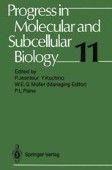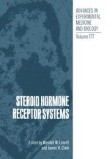Search
Search Results
-
Asymmetric division of stem cells and its cancer relevance
Asymmetric division is a fundamental process for generating cell diversity and maintaining the stem cell population. During asymmetric division,...

-
Reorganization of the 3D chromatin architecture of rice genomes during heat stress
BackgroundThe three-dimensional spatial organization of the genome plays important roles in chromatin accessibility and gene expression in multiple...

-
Molecular cloning and phylogenetic analysis of fructose-bisphosphate aldolase (cytoplasmic isozyme) in wheat, barley and rye
Fructose-bisphosphate aldolase (FBA, EC 4.1.2.13) catalyzes an aldol cleavage of fructose-1, 6-bisphosphate to dihydroxyacetone-phosphate and...
-
On the origin of chloroplasts, import mechanisms of chloroplast-targeted proteins, and loss of photosynthetic ability — review
Primary plastids of green algae (including land plants), red algae and glaucophytes are bounded by two membranes and are thought to be derived from a...
-
The peculiar distribution of class I and class II aldolases in diatoms and in red algae
Diatom plastids probably evolved by secondary endocytobiosis from a red alga that was up by a eukaryotic host cell. Apparently, this process...

-
Alterations in neutrophil (PMN) free intracellular alpha-keto acid profiles and immune functions induced by L-alanyl-L-glutamine, arginine or taurine
The objective of this study was to determine the dose as well as duration of exposure-dependent effects of L-alanyl-L-glutamine, arginine or taurine...
-
Lateral Transfer and Recompartmentalization of Calvin Cycle Enzymes of Plants and Algae
Certain Calvin cycle enzymes also function in glycolysis or gluconeogenisis, thus photosynthetic eukaryotes would be predicted to have ancestrally...

-
Foliar free polyamine and inorganic ion content in relation to soil and soil solution chemistry in two fertilized forest stands at the Harvard Forest, Massachusetts
Polyamines (putrescine, spermidine, and spermine) are low molecular weight, open-chained, organic polycations which are found in all organisms and...
-
Relationships among foliar chemistry, foliar polyamines, and soil chemistry in red spruce trees growing across the northeastern United States
Forest trees are constantly exposed to various types of natural and anthropogenic stressors. A major long-term goal of our research is to develop a...
-
Higher-plant chloroplast and cytosolic 3-phosphoglycerate kinases: a case of endosymbiotic gene replacement
Previous studies indicated that plant nuclear genes for chloroplast and cytosolic isoenzymes of 3-phosphoglycerate kinase (PGK) arose through...
-
Cytoplasmic Assembly and Nuclear Transport of the snRNP Particles
The snRNP particles, a family of six major (U1–U6) and a growing number of minor, less abundant (U7–U12) ribonucleoprotein particles, are stable...
-
Estrogen Control of Progesterone Receptor Induction in Human Breast Cancer: Role of Nuclear Estrogen Receptor
Since the original identification of cytoplasmic estrogen receptors (ER) in human breast cancer (1), rapid progress has been made towards linking...
